The Discovery Channel Team dominated this year’s Tour de France with three riders in the top ten (Contador-1st; Leipheimer-3rd; Yaroslav Popovych-8th) and first place in the team classification. The team used Trek bikes called Madone. Honestly, the most bike riding that I do is to a park less than a mile from my house, but I recently visited Trek. It was a most facscinating place, so join me on this photographic tour.
Trek was formed in 1975, amidst an energy crisis that aided a resurgence of the bicycle market. The vision of the company arose out of a meeting between Richard Burke, a former accountant, and Bevel Hogg, the owner of a Midwestern chain of bicycle stores.
“Schwinn dominated the specialty retail market at the time, which is where most bikes were sold,” said Burke. “But the mid-to-high end business was going to Japanese-made bicycles. We saw an opportunity to sell an American-made product in that category.” Burke convinced Roth Corporation to fund the venture with $100,000 in seed money, and Hogg provided the insight into the bicycle industry.
The duo chose to headquarter their new business in rural Waterloo, Wisconsin halfway between Burke’s suburban Milwaukee home and Hogg’s home in Madison. A humble, 7000-sq. foot barn, formerly a carpet warehouse, served as the launching pad for the company. The symbolism of the original red barn is reflected in the Trek shield logo in place today.
After a hot debate, a name was selected one evening in a bar just outside of Waterloo. Hogg suggested Kestrel, and Burke Intrepid. They settled on Trek, a word derived from Hogg’s native South Africa that was memorable and would later have global appeal. In 1976, Trek Bicycles was incorporated.
Lance Armstrong History Wall 1999-2005 in the atrium. One bike represents each year of the seven Tour de France victories. Each bike was used by Lance for a portion of each year’s race. The Tour was founded as a publicity event for the newspaper L’Auto (predecessor to the present l’Équipe). The “yellow” jersey color was because the L’Auto was printed on yellow paper.
Lance Armstrong’s 1999 stock OCLV 5200. When Lance joined the US Postal Service Cycling Team in 1997, this was the “stock” bike he was provided. This was a bit of a surprise to Lance, as pro riders were typically given a custom crafted bicycle. He ended up pleased with this machine. In fact he said “It is hard to believe this is a stock bike.”
Fact: This bike was pulled directly off of the assembly line, so it very well could have ended up in a bike shop in your home town. Instead, Lance piloted it to his first ever Tour de France victory.
Since then bikes have designed and developed specifically for Lance. Notably the 2000 Trek Time Trial machine. This was the first ever Trek custom bike for Lance. The bike was created for one event, and Trek only planned to produce four frames. It replaced another manufacturer’s titanium time trial bike that Lance used in 1999 that was painted with Trek logos and colors. After the 2000 Tour, the Trek Time Trial machine was in such demand, the frameset was made available to anyone at retail for $5000.
Lance’s 5900 Super Light used in 2000 on the Hautacam stage. This was Trek’s first use of OCLV 110 gsm carbon fiber frame material. Lighter and stiffer carbon fiber produces a more efficient racing machine. Since 1999, Trek has found ways to remove around a pound from the overall weight of the bikes each year. Considering the frame comprises only 20% of the total bike weight, this is an big achievement for Trek Development team.
With any type of professional racing, there are strict rules in place for the equipment. Bicycles used in pro racing cannot weigh less than 14.9 pounds. Over the years, Trek’s bike designs have become so light, that weight has been added at the start of race to satisfy the judges.
Lance’s 2001 Team Time Trial machine. Part of his”Tour de France Defense System.” This is the same frame design as the 2000 Time Trial machine. Aerodynamics are the major feature of this bicycle, with airplane wing shaped cross sections. Virtual and physical wind tunnel testing were used to design and develop this machine. The design saved twenty five seconds in a fifty kilometer race.
Lance’s 2003 5900 Super SL. This was one of at least five different bicycles used to defend the yellow jersey. Circumstances forced Lance to abandon the Madone and choose this prototype 5900SL. This was the first use of 110 gsm OCLV material. During Stage 15, Lance was temporarily delayed en route to the summit of Luz Ardiden when a spectator’s bag caught the handle bars. This sent Lance on to the ground in front of Iban Mayo, who crashed directly into Lance’s bike.
Lance’s 2003 5900: broken drive side chain stay through the “N” in the Shimano logo. After the chaos of the crash, Lance remounted his bike and continued on to win one of the most difficult climbs of the race. Unknown to anyone at that point, the impact was severe enough to crack the drive side chain stay. However, the Trek OCLV frame still was able to withstand the grueling punishment of the day. After the tour, Lance was delivered a new frame in keeping with Trek’s lifetime warranty.
Lance’s 2004 Madone SL (Plata Negra) affectionately nicknamed “Plata Negra” (Black Silver) by team mechanic Juanito Lujan. The Madone series of bike debuted in 2003 as a ground up rewrite of the dominant Trek 5000 series of bicycles. The 2003 Madone was designed and developed to blend the aerodynamics of the Time Trial machine with the super light weight of the 5900.
A blend of OCLV 55 gsm material and boron make this the lightest and stiffest Trek to date. The only other application for 55 gsm carbon fiber was in satellites orbiting the earth. The Madone series has undergone another blank sheet redesign for 2008 modelyear. It is currently the daily driver for the Discovery Channel Pro Cycling Team.
Lance’s 2005 TTx Time Trial Machine As other projects were being completed for Lance’s attempt at an unprecedented 7th Tour de France victory, a special request came into Trek’s Advanced Concept Group: What can be done with the Time Trial machine?
Could it be faster? Lighter? Stiffer? Could it be ready in time for the 2005 tour? Lance wanted to make a statement about winning in the time trial event. In only four weeks, the Advanced Concept Group designed and developed the TTx. The machine that would help Lance claim victory in the 2005 Tour.
Cables on the TTx are internally routed to add to the aerodynamic system. The rear brake cable exit port was symmetrically designed, with the intention that a rearward facing television camera could be mounted inside the frame. This could have provided Discovery Channel with very compelling content, especially during the Team Time Trial event. The idea was shelved due to existing high definition cameras being too heavy and the time crunch to simply deliver the bike before the Tour.
Greg LeMond’s racing bike from one of his three Tour victories during the 1980s. He was the first American to ever win the Tour de France. Today Trek designs, manufactures and distributes bicycles for the LeMond brand. Greg was arguably the first of the “technologists” of the 1980s. He experimented in the wind tunnel and with radical frames of his own design.
This the Trek product development area. Underneath one roof sits a collection of designers, engineers, strategists, and other bicycle industry wizards. They tackle over 150 projects annually—from trikes to Tour winners!
This is the “commuter garage” for employee bikes. There is a two-bike per employee limit.
Within the Bike Garage, there is a bike wash so employees can keep the equipment clean and ready to go. There is a 160-acre private “testing grounds” across the street from HQ. In addition to Moab or Whistler, this is where “Off-Road” bicycles go for testing. There is quite a bit of testing done at lunch. It can take up to two hours or more sometimes. After all, testing is important.
Bike tune ups are free for Trek employees!
Out in the factory raw OCLV bikes ready for paint. OCLV is Trek’s proprietary and patented carbon fiber construction method. This method yields some of the lightest frames in the world—weighing less that a one liter bottle of water! All Trek OCLV branded product is hand made in Waterloo, WI USA.
Let’s hope there is no tornado between 10 and 10:30 (or anyone in the shower).
This area is where all aluminum processes are completed. In the background is the age oven, used to “age” aluminum frames. This process returns the frame to T6 hardness after the welding process “softens” the material. It is instrumental in providing the desired ride quality of an aluminum bicycle.
This the OCLV carbon fiber finishing area. After each OCLV frame is hand built, they receive meticulous individual care. These finishing stations are where workers prepare the frames prior to
being painted.
I am holding a 2008 TTx Equinox frame prior to it going into the paint shop. It’s not that I’m strong—the frame weighs “nothing.” This frame may be the one that Discovery Channel Pro cyclist George Hincappie used in the time trial for the Tour de France.
This is the paint line. Note the “track” close to the ceiling. Like the automotive industry, a conveyor system is used. Each frame is individually painted by a highly trained frame artist.
“Project One” is Trek’s online custom paint offering. By using the Project One configurator at the Trek website and working with
a local dealer, a customer can specify a bicycle to their exact paint scheme. There are over one million combinations of colors and schemes. Right down to having your own name on the frame!
These frames are ready and waiting after painting. These are frames ready to be packaged and sent to the assembly plant.
Packed and ready to move on to the assembly plant. The bikes are built to a 80-90% complete state and from there shipped to over 5,000 world wide Trek Dealers.
On the truck and on to the assembly plant. Trek sells over 1,000,000 bikes annually across a world wide distribution network.
Trek staff heads out for the evening commute. Employees make good use of the commuter program. Each day someone rides, walks, skates or car pools to work, that employee receives credit for Trek products or cash for the cafeteria. This is an incentive to keep in the latest gear and promote general wellness. Between the commute to and from work and the “Lunch Time Ride” my friend at Trek used to average 50+ miles a day during the summers.
Michael Sagan was my host at Trek. On his last day at Trek, Lance Armstrong came by for the launch of the 2008 Madone. This picture shows Michael and Lance riding together (Michael is in blue; Lance in white to the left of Michael). Michael asked Lance what he thought of the new bike, and Lance said, “It’s awesome! I don’t know how you could do any better. I love it.”

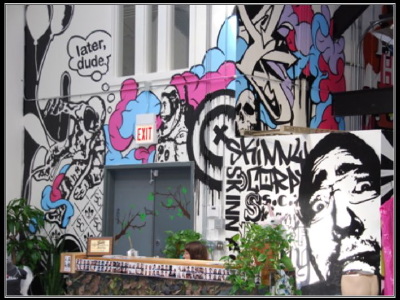

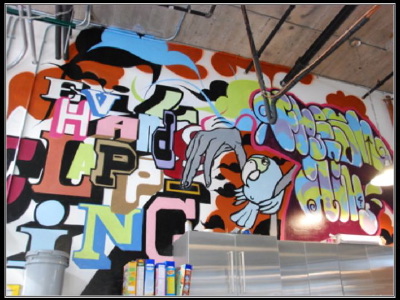
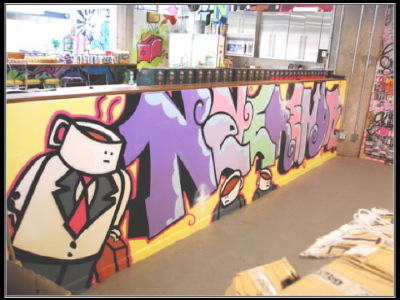
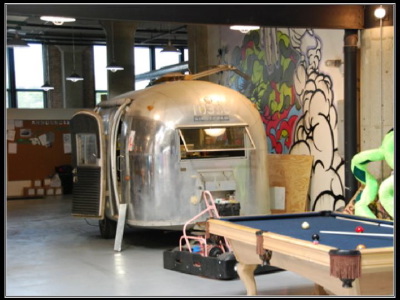

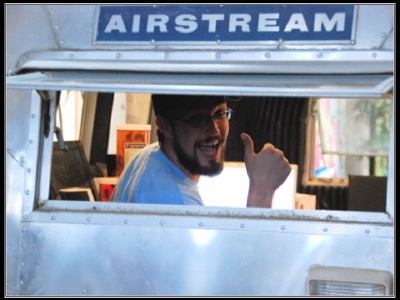
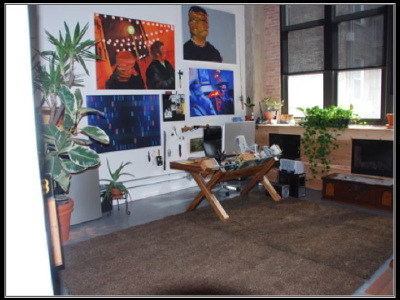
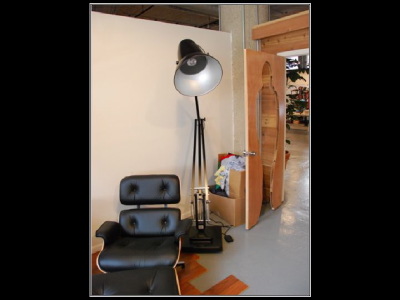

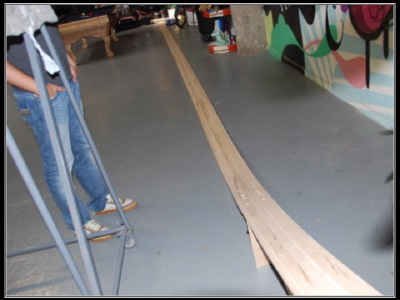

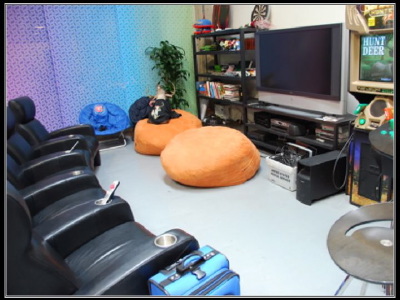
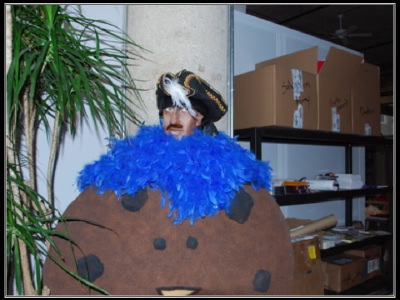
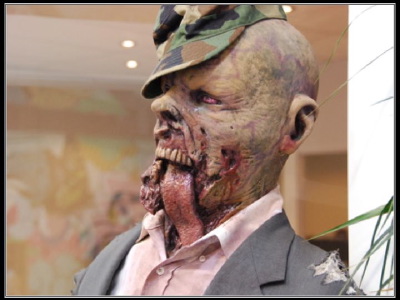

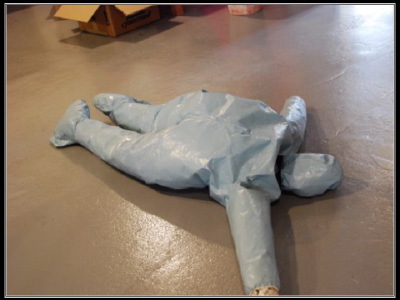

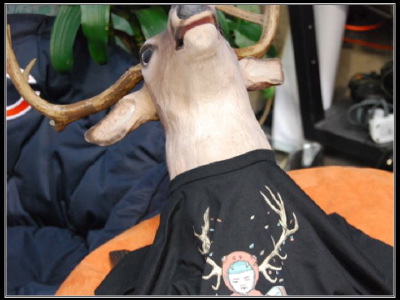
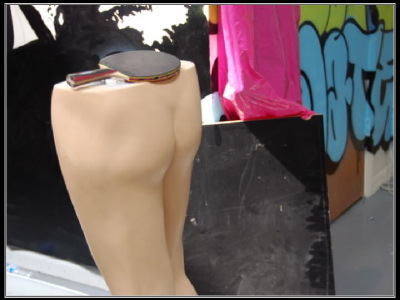
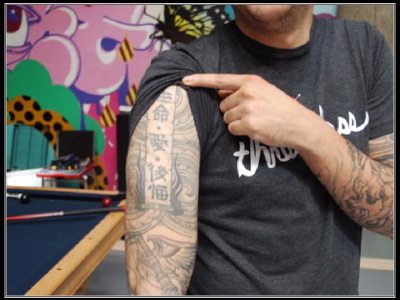







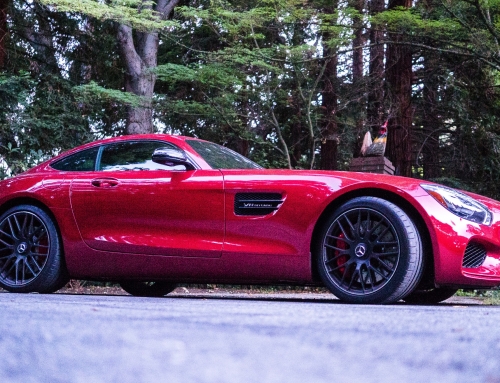
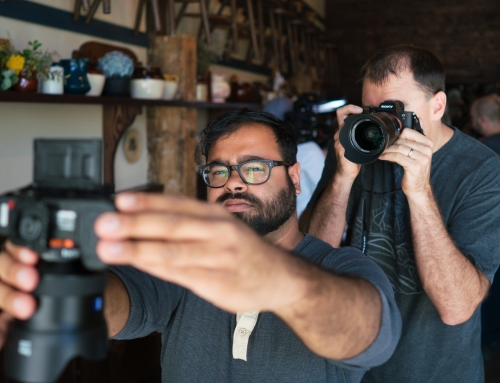


Nice post/report…thanks for sharing the tour!
No problems riding the 5500 OCLV here. Great post Guy – I loved the photos!
lance armstrong: doped
floyd landis: doped
contador: not yet proven (though he shouldn´t have even been allowed to start, because he was on that Dr Fuentes list)
leipheimer: With team gerolsteiner, about average – team discovery: An absolute performance explosion. – Must be the weather, or the nice people; certainly no substance introduced into his body. (As if)
A pity that a good name and decent engineering get marred by such unsportsmanship.
Matt
I love the post. I am cycling fan myself (although since I moved to Canada the seasons became quite short). I am surprised that Trek still seems to produce their frames in the US since most of the mainstream bicycle industry has moved to China and Taiwan for frame production.
Sure pro cycling is full of doping and if you’ve ever cycled across the alps and then watched a tour stage you know what’s going on. Those guys go up the mountains like a high speed train. Nevertheless it’s a great sport, especially outside the pro environment and millions of amateurs and hobbyists enjoy what the cycling industry has achieved in technological development and the level of quality that is available.
I see the pro tour as a showcase of the maximum of what is possible between men (and their “medical” support) and the incredible machines that have evolved from plumbing tube based frames to space age high-tech machines. Looking at it that way it’s great to watch the pros and still enjoy our own pathetic rides to the park ;-).
The photos are great, but I especially like your glimpes into life at Trek. “After all, testing is important,” Ha ha!
Matt-
Leipheimer had finished as high as 6th place in the Tour with Gerolsteiner. According to you, that’s only “about average”?
>>>>>lance armstrong: doped
Prove it.
cycling on dope
Guy Kawasaki tours the Trek
Guy Kawasaki recently took a tour of Trek – his post has some great pictures. I bought a Trek Pilot 1
Guy Kawasaki tours the Trek headquarters
Guy Kawasaki recently took a tour of Trek – his post has some great pictures. I bought a Trek Pilot 1
One point guy, the rules require bikes to weigh no less than 14.9 (not “no more than 14.9 lbs.”).
And to all who comment on the doping in the sport I still love, please put your money where your mouth is and forbid yourself from watching all other professional sports (especially professional football–c’mon, a 350 lb man running a 4.5 40? Pahlease). Doping is an epedemic in professional sports; cycling actually tries to do something about it.
Great post and as a cyclist I’m jealous of your trip!
If you want to watch some elegant engineering, watch the first part of the video on the Trek site where the engineers show how they used constraints to drive the new Madone design. On the doping thing, well, I think there’s enough evidence in all sports that a “guilty til proven clean” stance should be taken…an elegant solution is required to level the playing field. As a cyclist, I’m embarrassed. I’ve blogged about both Trek’s innovation and doping at http://elegantsolutions.typepad.com
“A pity that a good name and decent engineering get marred by such unsportsmanship”
why would trek’s good name be marred because a rider is suspected of doping? trek didn’t cheat so why would it reflect poorly upon them? they make the bikes for the team. they can’t control what the riders do.
Great post, Guy. very interesting read.
How to Change the World: My Visit to Trek: Two Guys in a Barn
How to Change the World: My Visit to Trek: Two Guys in a Barn: The Discovery Channel Team dominated this year’s Tour de France with three riders in the top ten (Contador-1st; Leipheimer-3rd; Yaroslav Popovych-8th) and first place in the team classifica…
Great post, Guy.
Errata: Greg LeMond, not LaMond (directly under his TT bike)
Did you get to see all the Macs at Trek? Apple did a video on them: http://www.apple.com/pro/profiles/trek/
Show, bro. Very nice trip. Thanks.
Trek should build velomobiles, completely enclosed all-weather bicycles. You pedal them and they go faster than old fashioned open air bikes. State of the art velomobiles currently weigh more than 30 kilograms each (with three bike wheels, a body & suspension) and high weight is the problem along with high costs. A decent velomobile (aluminum and fiberglass) costs more than $6500.00 in Europe, more than $8000.00 in the US, and that’s with Shimano 105 components! There is no doubt at all that Trek can build a far better, lighter, faster velomobile than anyone in the world. The designers and engineers at Trek were made for this dream job: building microcars that get 150 miles per hamburger. Fewer than 400 are being built each year, mostly in Europe. This is a challenge that can change America.
Wow, what an amazing experience. Aside from the silly bugger comments about doping (if someone in F1 cheats, is it the manufacturer’s fault? If someone in the 100m dash cheats, do we blame Nike?), you’ve got this blogger/bicyclist’s saliva glands active with the great pictures and information. Gotta say, though — that Lemond bike from the 80s is FUGLY. I used to say that my dream job was PR for an F1 team or a Scotch distiller. Hm. Maybe I should add flacking for Trek to that list.
Re:
“if someone in F1 cheats, is it the manufacturer’s fault? If someone in the 100m dash cheats, do we blame Nike?)”
and:
“why would trek’s good name be marred because a rider is suspected of doping?”
What? I wouldn´t have expected that commenters/ readers here are that naïve. – Why did Nike support Ben Johnson (I doesn´t matter if it was Nike or Adidas or whoemever)?
Why is Mercedes in the F1?
Why is Trek providing free bikes plus all kinds of support to Team Discovery (my assumption that it is free)?
Why is Coors light sponsoring Earnhardt Jr?
–> Preferably (good) publicity.
–> Higher sales?
Now, I fully understand, that Trek can´t do much about doping. I assume though, that they rather support a clean tour winner whom they could put in marketing material (“The winner – due to being a great athlete and superior equipment”) as opposed to a doped one (“The winner – high as a kite. He won because of using illegal substances more effectively than the others and maybe his Trek bike had also something do with it – we´ll never know”) – Not quite as catchy, huh?
Matt
Trek Tour…In Pictures
Kawasaki has a great post on his tour of the Trek Bike Company’s facility in Wisconsin. I am proud to ride a Madone bike, Trek’s full carbon bike. (My bike is named Carbon Positive). My favorite way to describe my
40 hours in 3 days – Starting a new business
Guy Kawasakis pictorial review of the TREK bicycle works in Waterloo, Wisconsin reminded me of the hectic days, in 1995, when I participated in the early buildup of Ciphergen in Palo Alto. Whenever we needed some electrical parts in a…
@JB:
Sorry, mate, I don´t have neither a laboratory nor a urine sample of L.A. – The french have, though:
http://en.wikinews.org/wiki/Lance_Armstrong_accused_of_EPO_doping
Then again, anticipating your reply, you´re probably right, what can you expect from the french ;)
——> I couldn’t have said it more succintly. While I think it’s prudent to believe that cycling is inundated with cheaters, you’re going to have to do better than “the French say so” before I’ll believe an athlete is guilty. The motivation to remove any Tour champion who is American is just to strong for me to take them at face value.
Great article on Trek. I spent seven years working in house at Trek, and all I can tell is you is that this article only scratches the surface of the Trek lifestyle. You might never become financially wealthy working there, but you will have a very rich life in all other areas.
Interesting that one of the possible names was Kestrel. Kestrel is a Santa Cruz based bike company which specializes in carbon fiber bikes. A couple of years ago I had my Klein repainted, and since Trek owns Klein, it went through the Trek paintshop. It is a great aftermarket service they have to keep their customers happy and their bikes in great shape.
Guy,
This is the kind of quality post that keeps me coming back. Thanks.
Quer conhecer a fábrica daTrek?
Dei de cara com este blog e encontrei lá um post muito interessante: My Visit to Trek: Two Guys in a Barn.
Guy Kawasaki, auto denominado um evangelista de muitas coisas, os produtos da Apple entre elas, descreve a sua visita à fábrica da Trek. Apesa…
Great post Guy –
Although I’m not a true ‘rider’ personally, my nephew is in the pro circuit. Looking at your photos reminds me of going to his house – it’s all bikes and gear. I really enjoy looking at his bikes and how he puts it all together for a ride. And – wow! are they light. Just amazing. Thanks for the tour I really enjoyed it and most of all I got a real sense that the people who work for this company really dig what they do – our motto!
Robin Ogden
http://www.firedupcareers.com
@All : Greetings from a French high-tech fellow, cyclist, and L.A.’s fan ;-)
@Critics : no, not all the Pros are cheaters. Look at the overall performances at the recent Tour and the previous 2- or 3-weeks races this year, such as the Giro, the Tour de Suisse, or the Dauphine : average speed during mountain’ stages decreased, nobody really dominated the whole race, etc.
Plus, the very good news is that cheaters are detected now. Only the stupid guys will continue heavy doping.
Instead of critizising Cycling for the doping, better consider it’s the ONLY sport who makes such an effort to find the cheaters. Take US Football, European Soccer, Tennis, etc : sure, there’s not that much bad guys. But, isn’t it that you find things only when you search for them ?…
@Guy : interesting you haven’t published any photos of the new Madone, used by the DSC’ folks during the Tour. FYI, this bike is a great example of *Marketing 101* applied to the Cycling industry : how to explain to your customers that what you’ve been saying over the last couple of years is obsolete now. In other words, how to explain why “ultimate” doesn’t mean “eternal” ;-)
I always enjoy your reports from the field, Guy. As a Trek rider, this one has a special place. I love the incentives for commuting, it’s amazing how few businesses provide simple facilities or programs to encourage bike commuting (showers, locker room, gear room, garage). These are minor expenses (much more valuable than an employee outing T-shirt) and encourage good health, morale and ultimately, retention.
Thanks for the behind-the-scenes view.
This is sooo cool!! I ride my bike and I have a Trek 1000. Sounds like the employee gets some awesome benefits too. For an example, you friend got to ride with Lance.
My bike is just like the beginner type of bike. I have always wondered if I would get a lighter bike, if I would actually see any changes in my speed or endurance… Did you happen to hear anything like that?
Of interest: Guy Kawasaki’s Visit to Trek Bikes
Of interest… Guy Kawasaki’s Visit to Trek: Two Guys in a Barn … “The Discovery Channel Team dominated
great post! Awesome to see the inside of companies like this. I take very careful care of my 2200. I’m with Lance on the “I can’t believe it’s not custom.” When I was test-riding, I tried 13 or 14 different bikes, and as soon as I sat on my bike the comfort level wasn’t even close to the other ones.
@the critics: don’t complain about it, just don’t watch it; you’re the dopes. Some of us like to ride and still think it’s fun to watch. And ps; if you doped I’d argue you couldn’t keep up to the worst of the clean riders. ;)
Trek visit in pictures
Unable to get out of the office as much as I’d like, it was fun reading Guy Kawasaki’s post about his recent visit to Trek. I never realised Trek had been so close to being called ‘Kestrel’ or ‘Intrepid’. The
guy,
a very good post indeed. however, since you haven’t mentioned it, but probably learnt it on your tour, how many bicycles can trek make a day or week at this facility?
would you say their plant is big square meter wise?
and are the operations done cell wise, you know…is it a lean manufacturing system?
appreciate the info. just curious.
You answered some of the questions i have in mind. Now, I am wondering whether all bike manufacturing companies, including Morpheus Bikes, follow the same process.